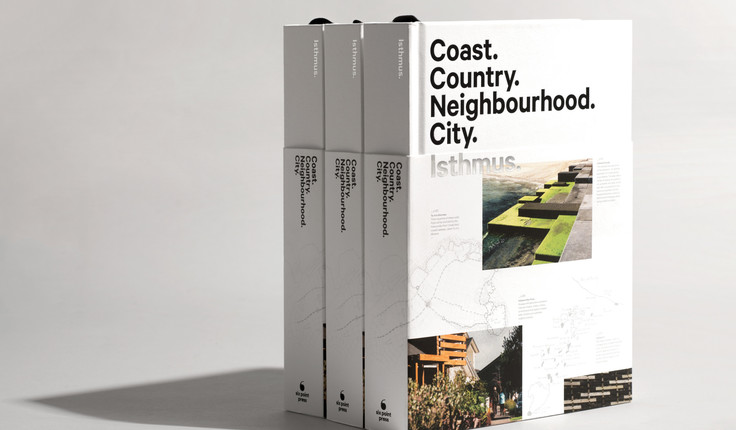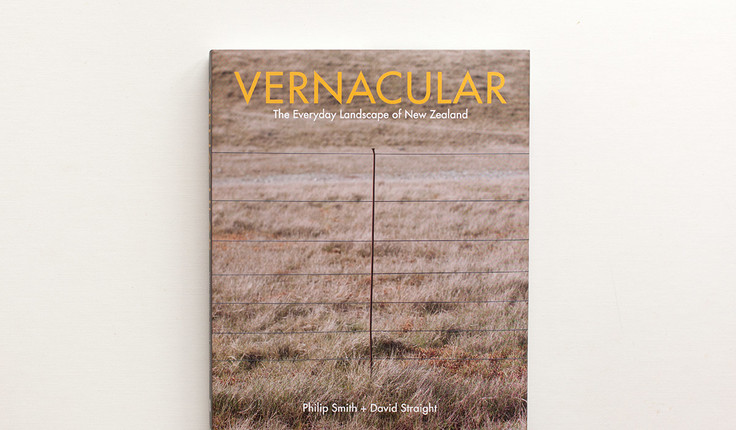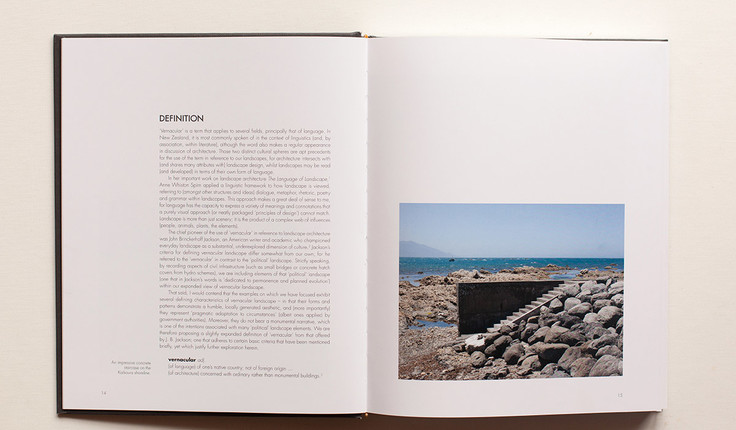News
Turn the page
Posted 25 11 2016
in Magazine

We speak with Garth Falconer, Ralph Johns and Philip Smith — the authors of three notable, but very different, books that were published last year. From initial motivation to lessons learned, the three men share their opinions and insights.
In 2015, the Landscape Architetcure profession was graced with not one but three books, which dared to expose this oftsecretive realm to the wider world. Well received by the industry and critics alike, these volumes have brought their authors national fame, if not fortune; and have served, each in its own way, to validate and memorialise the history – and, yes, in some instances to mourn lost opportunities – of our built environment.
Justin Foote sat down with the authors to get an insight into the process of bringing these books to life and to see, one year on, whether time has brought additional wisdom.
JF: Gentlemen, your books take vastly di erent approaches to looking at our landscaped surround- ings, why did you feel that your particular book was important to do?
Philip Smith: For me, it was important to write Vernacular to advocate for the appreciation of differ- ent cultural layers within the making of landscapes. Especially in Auckland, I feel that there has been a tendency in recent decades towards wiping the slate clean, rather than taking a more nuanced approach to design. It is important to value context, and also to view context as something that is dynamic and living.
Ralph Johns: The main incentive to write Coast. Country. Neighbourhood. City. was a combination of energy and change. The introduction of
Architecture to the practice in 2013 served to reinvigorate us; we tapped into the same mindset of opportunity-seeking and challenge-setting that has characterised Isthmus since day one. Alongside that, a new generation of leaders within Isthmus brought fresh energy.
We felt it was really important for us to understand, as a collective, where we came from and where we stand, before setting a direction for the future. We sensed that a process of re ection and understanding would distil the Isthmus attitude so that we could protect what was unique about the way we think and work, and take that forward with us as the business grew.
We wanted to capture stories behind the projects so that new staff could learn the isthmus way, and see how our values play out in design. CCNC, stocktakes where we have come from and highlights the approaches, values and attitudes that we wish to take forward.
Finally, on a personal note, there was also a strong element of giving something back to the founders, David Irwin and Gavin Lister that kept me going with the project.
Garth Falconer: Living in Paradox came about simply because there was no other book on the design of the urban environment in New Zealand; where 85 per cent of us live.
JF: Philip, New Zealand is often celebrated for its magni cent natural landscape and yet you chose to lionise the everyday, that which could almost be described as mundane. Why this particular topic?
PS: One reason for our interest in landscapes that have evolved from everyday use is that they have a rationale – or perhaps better said, a ‘cultural intelli- gence’ – behind their formation. This stands in con- trast to the way in which arbitrary ‘themes’ are often applied as the genesis for design work; whether in landscape architecture or other elds.
JF: Ralph, You chose to work with an editor, Mike Barrett, as well as graphic designers Inhouse; how did that decision come about?
RJ: Embarking on the project we set ourselves the benchmark of producing a book that would be good enough to win an award for being a book. I worked throughout with landscape architect and isthmus associate Sarah Bishop. Sarah and I developed the raw content. But from early on we knew we didn’t have the skills between us to make a really great book – we needed to work with experts in other fields.


We approached Mike Barrett – at the time, editor of Landscape Architecture NZ – as he was not only intelligent, witty and knew our industry, but he also had a deeper interest in place, design and culture. Through Mike we met Arch MacDonnell from Inhouse who had just nished a book for John Reynolds that really impressed us. Arch and Sarah Gladwell approached the project with huge enthusi- asm and a crystal clear vision. Their initial concept sketch is incredibly close to what ended up rolling off the press a year later.
JF: Garth, you talk in the book of an almost utopian New Zealand in terms of what could be achieved as opposed to past errors. Are we, now, on the road to realising that? What more do we need to do?
GF: I approach New Zealand as a paradox: part utopia, part dystopia. Without historical knowledge we are bound to repeat the errors of the past. There are certainly positive signs that we are becoming better at consciously designing our towns and cities – redevelopment projects, incor- porating cycleways, new parks and the like – but, equally, there are other elements that are not so great – poor housing, reduced funding of commu- nity projects, the Christchurch rebuild et cetera. What more do we need to do is a big question – I believe much of the answer lies in the potential of design, the process of thinking through how to optimise change, research, trialling and developing, reviewing and so on.
JF: Where to from here, in terms of another book?
PS: In the medium term, I won’t be working on an- other book. It’s extremely expensive and time-con- suming – although I’m very glad I expended the effort and money on Vernacular. In the long term, there may be an opportunity for a book on threat- ened native plants.
RJ: CCNC was always approached as an ‘open book’. It was about the story so far, not a retrospective of de nitive work. CCNC captures a point in time, so it’s possible there will be a sequel, one day. But the pur- pose and time would need to be right. And one thing is for certain, it would be quite different to CCNC. We approach every project from the ground up.
GF: To my surprise, I am indeed writing another book. This one, on the work of Harry Turbott, New Zealand’s rst tertiary-quali ed landscape architect. I am motivated by the need for the leading work that Harry provided us to be well known and celebrated. Writing books is a major nancial loss-making exercise – it’s a pity; maybe online publications
are the way of the future.
JF: What one thing, more than any other, would you like people to take away from reading the book?
PS: To really look at – and value – the places in which they live.
RJ: I’d like general readers to gain a deeper apprecia- tion of the interaction – or design conversation – between our land, our people and our culture. But more than anything, I would like people to be inspired to go and visit some of the projects in the book and see part of Aotearoa New Zealand in a way they hadn’t seen it before.
GF: That the future is in our hands and that we should be emboldened by the good work that has been done here by those who have gone before us – it’s an inter- generational responsibility.
JF: And nally, If I had known at the beginning of this process what I know now, I...?
PS: ...might have altered a small number of trips to take in places or objects that we have since seen (or been told about).
However, there isn’t anything signi cant that I would alter. A lot of thought over many years went into forming ideas around this and David Straight and I were comprehensive in how we went about the project.
RJ: ...would never have got started!
I’m only half joking... this exercise was right up there with the few hardest projects I have ever done. At least half of it was done in my ‘spare time’, working the night shift, sharing takeaway chicken dinners in the studio with Sarah and Mike, or spread out on the kitchen table at home typing away on the laptop long after I’d got the kids to bed.
If Inhouse and Mike had known what they know now, would they have got involved? Absolutely! We really gelled as a creative team. It was an iterative process and we were all good with that as we all had the same aim of making it as good as it could be. Like all things in life, the more you put in the more you get out.
GF: ... you know, I honestly had thought that I could nish the book in two or three years!
In truth, it was a marathon effort, which I am glad
I was able to complete and that family, friends and work colleagues were there to support me
Share
19 Dec
Christmas break 2025

see you from 12 January
As we wrap up another big year, we’re taking a moment to pause, breathe, and enjoy a well-earned break. Meri …
18 Dec
President’s update

December 2025
Earlier this month I attended the Ngā Aho Māori Design Professionals Wānanga-ā-Tau at Te Aranga Marae in Flaxmere. Tuia Pito …
18 Dec
Awards 2026 update

An update as we warm up for the 2026 Awards kaupapa. Submissions will open in March and will run for …
Events calendar
Full 2025 calendar